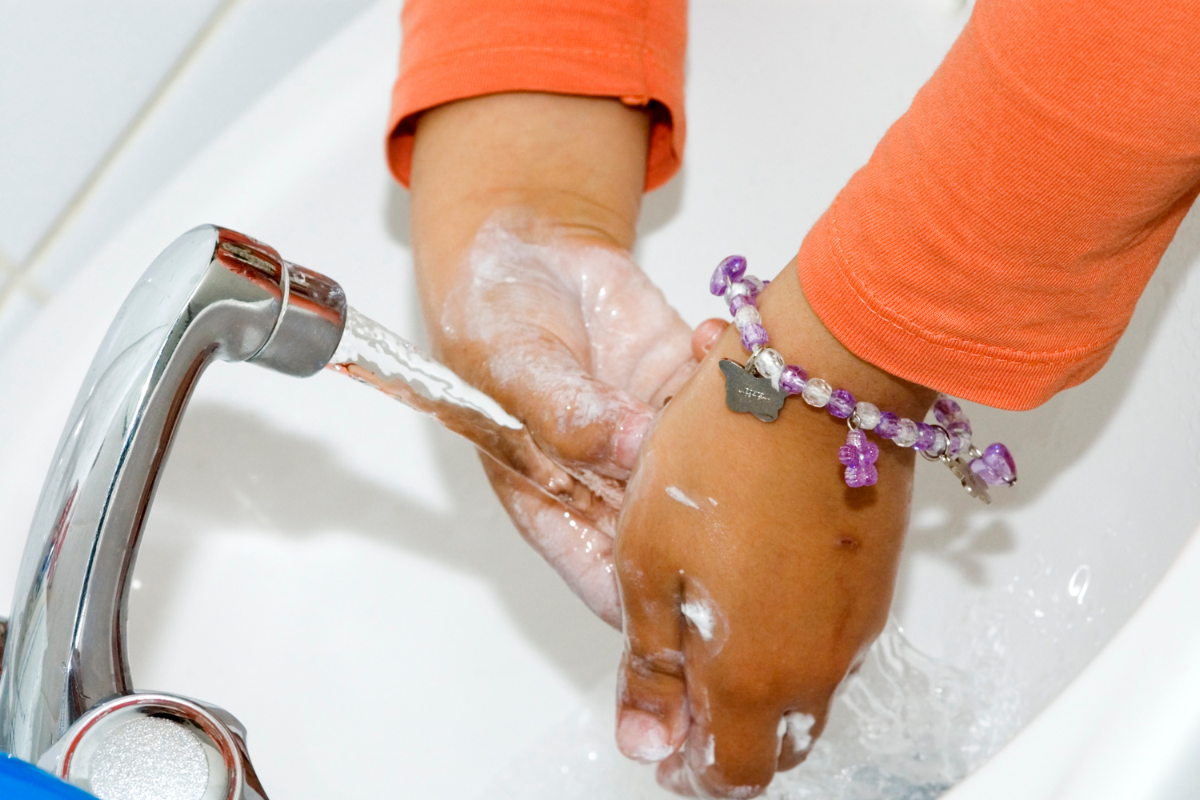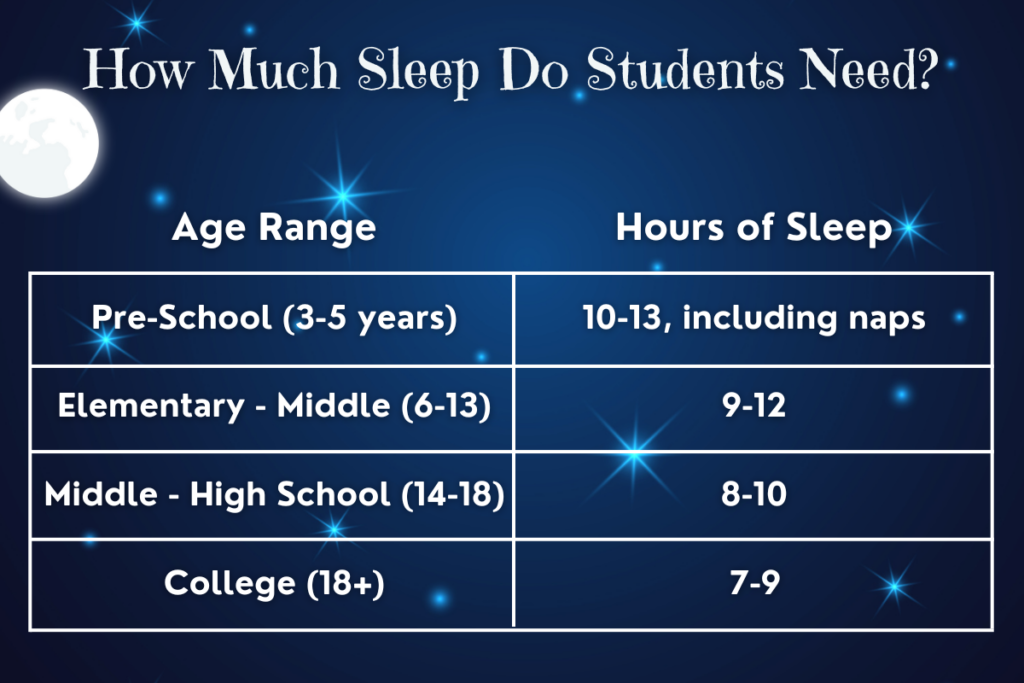Every parent knows how important it is that their kids go to school. Even a few absences can disrupt a child’s learning. Plus, it’s stressful for parents, especially if they work outside the home. While many factors cause absenteeism, student health is something that, as a parent, you can help with.
Teaching your children the importance of healthy choices and proper hygiene should start early. But it must be reinforced and expanded upon throughout your child’s life.
Student health goes far beyond preventing illness; it encompasses everything needed to build a foundation toward a holistically healthy life. This includes diet, exercise, hygiene, and mental wellness.
Sharing these health tips with your student will teach them how to care for themselves and make healthy choices that will last a lifetime.
Student Health Starts with Nutrition
A healthy, well-balanced diet is crucial at every stage of our lives.
For students, it gives them the nutrients they need to maintain a powerful immune system, grow and develop normally, and concentrate and learn to the best of their abilities. It also helps them sleep better, stay stronger for physical activities, and reduces the likelihood of chronic conditions later in life.
Proper nutrition includes fruits, vegetables, lean proteins (including meatless alternatives), whole grains, and dairy products. Using the MyPlate.gov guide is an excellent way to portion your child’s plate.
Because many children have higher metabolisms, they often get hungry between meals. Ensure you offer healthy snack choices such as fruit, yogurt, nuts, and nutrient-dense grain-based snacks.
Of course, children deserve a treat now and then, but you should limit the amount of sugar, processed foods, and salty snacks your child eats. The American Academy of Pediatrics recommends no more than 25g or 6 teaspoons of sugar per day for children two and up.
Unfortunately, hidden sugars in foods and beverages can make monitoring their intake challenging. Check labels, especially on products that frequently add unnecessary sugar, such as flavored yogurt, fruit cups, and juices. And opt for whole grain, less sugary options for breads, cereals, and other products.

Illness Prevention and Hygiene
Student health starts at home, but it needs to be practiced at school, too. One of the best ways your child can avoid getting sick is by washing their hands throughout the day.
Germ prevention measures are still high in school systems, but teachers don’t always have the time or ability to wipe down every surface between classes. Remind your students to wash their hands every time they go to the bathroom, before they eat, and between switching classrooms.
To prevent the spread of germs, if at all possible, keep your kids home if they are sick. And teach them to politely maintain distance from other children who are coughing, sneezing, and sniffling. Show younger children how to cough and sneeze into their elbow or a Kleenex.
While masks are no longer required, they are still highly beneficial if your child has a low immune system or lives with someone else who does.
Vaccinating your children is another crucial step you can take to keep your children healthy while stopping the spread of contagious, preventable illnesses. Plus, yearly checkups help you feel more confident that your child is growing and developing healthily.
General hygiene, including brushing teeth and bathing regularly, is also essential in building and maintaining a strong immune system.

The Importance of Sleep
Good sleep is necessary for every aspect of student health, and studies have shown that sleep has a significant impact on student attendance.
It helps your child with cognitive functioning, such as attention, concentration, and memorization. It also allows them to control their reactions and emotions more effectively.
Sleep is necessary for physical health, as well. It supports healthy immune function, cardiovascular health, tissue regeneration, and growth and development.
The number of hours of sleep your child needs is based on how old they are, how active they are, and their individual needs.

Information adapted from kidshealth.org.
You can recognize the signs of students not getting enough sleep if they or their teachers report them being tired throughout the school day, unable to focus or pay attention, feeling cranky or acting out, and not performing school work as well as before.
If you’re having trouble getting your child to sleep on time, try these tips:
- Develop and maintain a regular bedtime routine
- Avoid screen time (including TV) at least one hour before bedtime
- Make sure their room is dark, quiet, and at a comfortable temperature
- Avoid caffeine, sugary treats, or large meals close to bedtime
- Encourage physical activity during the day
Good sleep will help your child stay healthy, do better in school, and develop strong sleep habits that will benefit them throughout their life.
Staying Active and Strong for Optimum Student Health
Physical activity does so much more than encourage a good night’s sleep! It’s vital for every aspect of your child’s health.
When kids engage in physical activities they enjoy, such as sports, running, bicycling, and dancing, it improves their overall well-being. It positively impacts their mood regulation, concentration, immune system, cardiovascular functions, development, strength, and metabolism.
If your child isn’t athletically minded, try to find physical activities they do enjoy. They could try yoga, martial arts, walking the dog, roller skating, swimming, or playing in the park. Let your kid explore different options until they find something they’re excited to do.
And lead by example. Your kids are much more likely to enjoy something when they do it with their parents.

Back Health
Staying strong also includes taking care of their backs and posture.
Fewer schools use lockers these days. For one, many classes utilize shared or digital textbooks. Folders and binders are often kept in the classroom for each student. So, most students no longer need lockers at all. Plus, there have always been security and safety concerns. Removing or keeping them locked eliminates the ability to hide things kids shouldn’t bring to school.
The downside of this is that backpacks may be heavier without lockers. Therefore, kids need to understand that, while it may not look cool, carrying their bag on both shoulders centered on their back is the safest way. It prevents back strain and, much less importantly, broken straps.
The other problem for both kids and adults is bad posture, often caused by looking down at our phones.
When you see your child slouching or looking at their phone, remind them to sit up straight, lift their chin, and roll their shoulders back. Encouraging frequent breaks from their phone not only lessens their screen time but also gives them more opportunities to prevent neck strain. Remind them to take breaks from schoolwork to perform gentle neck and back stretches.
If your student struggles with their posture and back or neck pain, a family chiropractor can help. They can improve strain and back health while teaching you and your family stretches and exercises that reduce pain and promote posture and strength.
Student Health and Stress
In the same way that kids need to take care of their bodies, they also have to care for their minds. Stress management and mental well-being are vital for student health.
Between their school, home, and social lives, children can easily become overwhelmed and stressed. While this is normal for everybody occasionally, chronic stress can lead to many problems affecting school performance and attendance. These include a lower immune system, poor concentration, aches and pains, and mental health challenges.
Fortunately, you can teach your kids many techniques to help them cope. Stress management techniques can empower them to handle challenges with resilience and confidence throughout school and adulthood.
Every child is different, so you may need to try different approaches until you find what works best. Introduce them to deep breathing exercises, journaling, meditation or mindfulness practices, and creative outlets, such as drawing and crafts.
Above all, check in with your kids and keep communication open. Knowing they can talk to you about their struggles will help improve their mental wellness and healthily cope with stress.
Again, stress is a normal part of everybody’s life. But teaching your kids how to cope with it will make them healthier and stronger, both physically and mentally.

Healthy Students Lead to Healthy Adults
Teaching your children about making body-conscious choices throughout their school days promotes a lifetime of health and vitality.
Discussing the importance of nutrition, hygiene, sleep, staying active, and stress management helps them build healthy habits that will stick with them for good. Excellent student health also helps them miss less school and do better when they’re there.
And when you lead by example, you’ll be healthier too. Your immune system will be more robust, and your body will move more efficiently and without pain.
Showing your kids how to be healthy is just as important as teaching them. They’ll grow up to lead active and fulfilling lives, and eventually, they’ll pass those crucial lessons on to their children.






